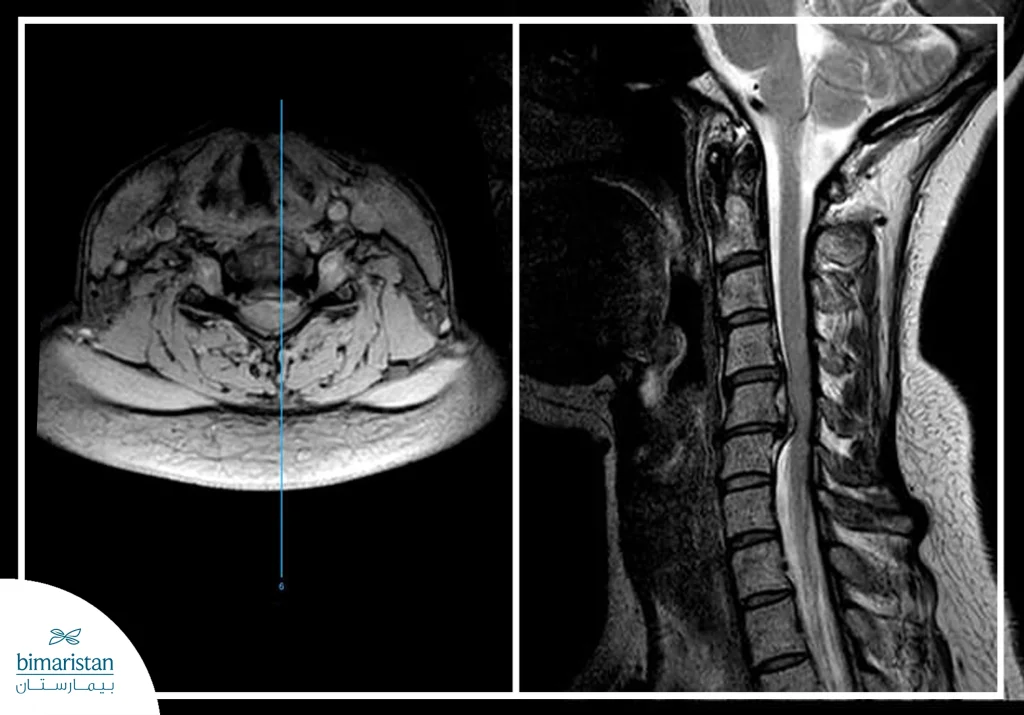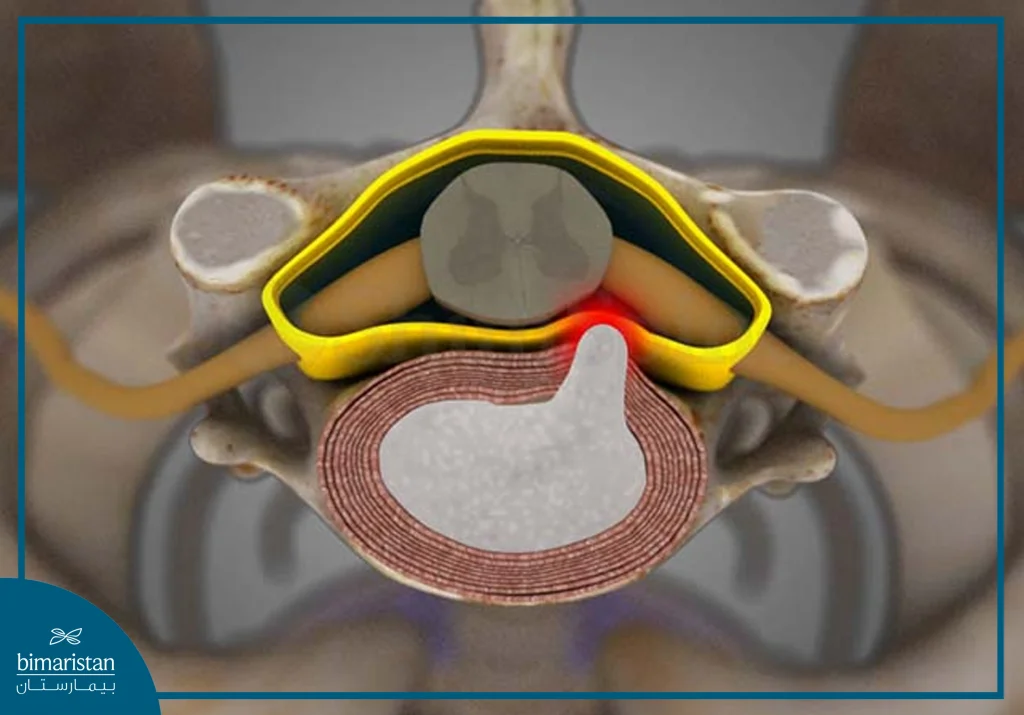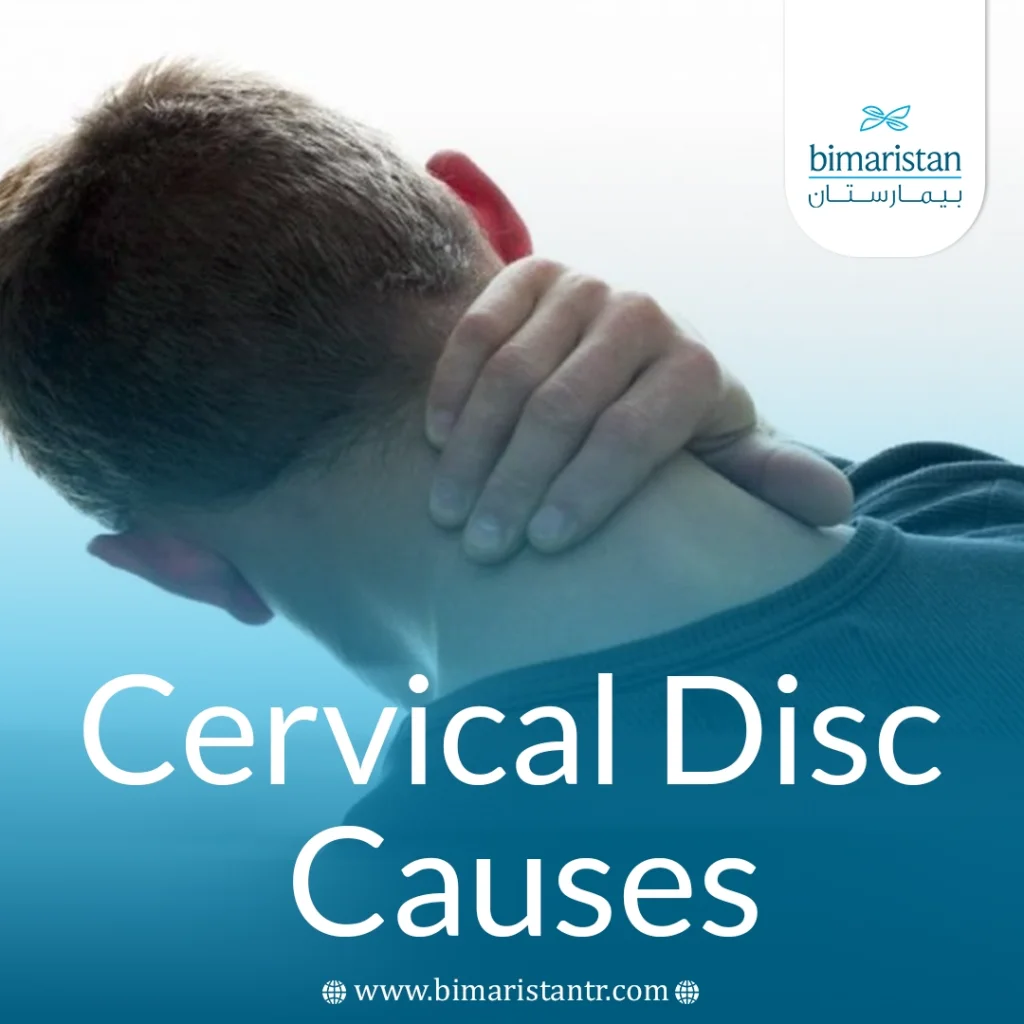Cervical disc disorders are among the most common spinal conditions, affecting millions globally and becoming more prevalent with age. Cervical disc causes often stem from disc degeneration between cervical vertebrae due to chronic stress, poor posture, or repetitive movements. Studies show that nearly 30% of adults experience symptoms linked to cervical disc herniation during their lifetime, highlighting the importance of understanding cervical disc causes for early prevention and effective treatment.
What is a neck disc?
A neck disc or herniated disc is a common spinal disorder that results in protruding or ruptured intervertebral discs, causing direct pressure on the spinal cord, the nerve coming out from between the vertebrae, or both. This condition affects the patient’s daily life, as cervical discs have many symptoms that reduce the patient’s quality of life, most notably:
- Mild to severe pain that burns when you touch the affected area (most common symptom)
- Numbness of the upper extremities, which may also extend to the lower extremities
- Occasional loss of balance
- Neck stiffness
- headache

cervical disc causes:
Cervical disc causes are many and varied, as there is not just one single cause of the condition, but a wide range of causes, the most important of which are:
- Age: Aging increases the likelihood of developing a neck disc because the cartilaginous disc between the vertebrae loses its elasticity over time and becomes more prone to damage and herniation, so people over the age of 40 are more likely to develop the condition.
- Poor neck posture: Sitting in the wrong position repeatedly increases the likelihood of developing a neck disc, such as sitting in front of a computer with your head tilted too far down.
- Smoking and unhealthy lifestyle habits: Smoking may play a role in the occurrence of herniated discs, due to the effect of smoking on the body’s vessels, which reduces blood flow to the discs between the vertebrae, and this predisposes the occurrence of a neck disc.
- Injury or trauma directly to the neck area: Walking accidents or tripping and falling directly on the neck are common and direct causes of whiplash.
- Family history: Having a first-degree relative with the condition greatly increases the likelihood of developing a neck disc, but not necessarily always.
- Weak neck muscles: Weak neck muscles for any reason can lead to increased pressure on the cervical vertebrae, resulting in neck discs.
- Excessive load: Repeatedly carrying heavy weights in the wrong position, involving neck muscles and bones, can lead to herniated neck vertebrae.
- Repetitive, violent movements: Moving the neck suddenly and violently a number of times over a long period of time can cause this condition.
These are the most important and prominent cervical disc causes, but they are not the only ones, as there may be some other minor causes that indirectly lead to herniated discs of the neck vertebrae in the long run.
Risk factors that increase the likelihood of developing neck discs
Some people are more likely to develop neck discs as a result of a combination of factors that weaken the structure of the cervical vertebrae and discs over time:
- Sitting for long periods of time: As in office jobs and working in front of a computer for long hours, sitting for a long time in the same position puts the cervical vertebrae under constant pressure that may develop into a neck disc.
- Repetitive stress or constant vibration: Driving trucks or operating heavy machinery that puts repetitive stress on the neck.
- Poor physical fitness: Lack of movement can lead to weakness in the muscles that support the neck, increasing the risk of a herniated disc.
- Excessive obesity: Being overweight increases the burden on the spine, especially in the neck and lumbar region.
- Smoking: Smoking reduces blood flow to spinal tissues, which can accelerate the deterioration of discs.
- Aging: Cervical discs lose their elasticity over time, making them more susceptible to cracking or tearing.
- Genetic factors: Genetics may play a role in making some people more susceptible to early disk erosion.
How is a neck disc diagnosed?
The choice of tests to be used in cervical disc diagnosis depends on the symptoms and their severity, as well as the causes that led to the occurrence of the disc, and the most important of these tests are:
- Clinical examination: The clinical examination is done by asking the patient and taking a clinical history to determine the nature, location, and severity of the injury, as well as to determine whether the condition is present in first-degree relatives or is acquired.
- Lab tests: Lab tests include a blood count (red blood cells, white blood cells, and complete blood count) to rule out neck disc issues caused by bacterial infections or cancerous tumors.
- X-Ray: X-rays are an initial step in determining the degree of injury and the possibility of neck fractures related to traffic accidents or falls.
- Computed Tomography (CT Scan): This imaging is sometimes used because it is the most sensitive to examine the bony vertebrae of the spine, and this imaging can show calcifications around the vertebrae or damage to the bony vertebral tissues.
- Magnetic Resonance Imaging (MRI): MRI is the most sensitive type of imaging for examining intervertebral discs, as it is able to show the discs, neighboring soft tissues and surrounding nerves much more clearly than other imaging modalities.
These methods help diagnose a herniated disc and, in some cases, may also help identify possible cervical disc causes.
Complications of neglecting a neck disc
Neglecting treatment or delaying the diagnosis of a neck disc may lead to a gradual progression of the condition, causing damage that is difficult to treat later, and with continued pressure on the nerves or spinal cord, complications affecting movement and sensation can arise, the most prominent of which are:
- Development of cervical myelopathy: This is one of the most serious complications, as the pressure travels to the spinal cord, causing generalized weakness in the body and disturbances in balance and gait.
- Chronic nerve compression: Leads to weakness in the muscles of the arms or hands and difficulty performing fine movements such as writing or grasping objects.
- Loss of sensation or permanent numbness: The result of persistent damage to nerve fibers, causing numbness in the upper extremities.
- Chronic pain: Over time, pain can turn into a chronic condition that is difficult to control even with medication.
Early detection and proper treatment of neck discs can greatly reduce these complications, so it is advisable to see a doctor at the onset of any persistent neck pain or numbness in the hands to avoid the progression of the condition.

Cervical Disc Prevention
The risk of injury and prevention of neck discs can be significantly reduced by following simple health habits that maintain the integrity of the spine and protect the cervical discs from premature wear. Prevention starts from modifying the daily lifestyle and paying attention to the correct posture during work and rest, and the most important tips that can be provided:
- Correct your posture: Try to keep the head aligned with the spine and avoid prolonged leaning toward the phone or computer screen.
- Exercise regularly: Exercises to strengthen the neck and shoulders go a long way in supporting the cervical vertebrae and minimizing pressure on them.
- Take frequent breaks: Especially during office work or long drives to relieve the constant pressure on the neck.
- Choose the right pillow for sleeping: A medium-height pillow is recommended to keep your neck straight while you sleep.
- Maintain a healthy weight: To minimize the burden and pressure on the cervical vertebrae.
Can neck discs be treated?
With the development of medicine, the treatment of neck discs has become possible, as there are many operations that can be performed to get rid of neck discs almost completely, and the most important treatments include:
Cervical disc causes vary from mechanical and age-related factors to wrong daily habits, but early diagnosis and proper treatment can greatly reduce complications. At Bimarestan Medical Center in Turkey, we provide comprehensive care using the latest diagnostic and therapeutic techniques for spinal issues, under the supervision of specialized physicians, to ensure the best results and restore the quality of life.
Sources:
- StatPearls Publishing. (2024). Cervical Disc Herniation. National Center for Biotechnology Information (NCBI).
- Jiang, C., Li, Y., & Liu, Z. (2024). Minimally invasive percutaneous techniques for the treatment of cervical disc herniation. Journal of Clinical Medicine, 14(10), 3280. Retrieved from


